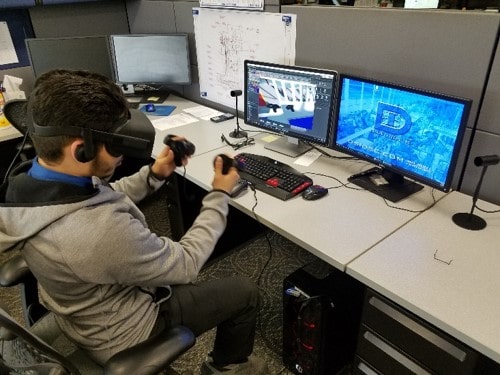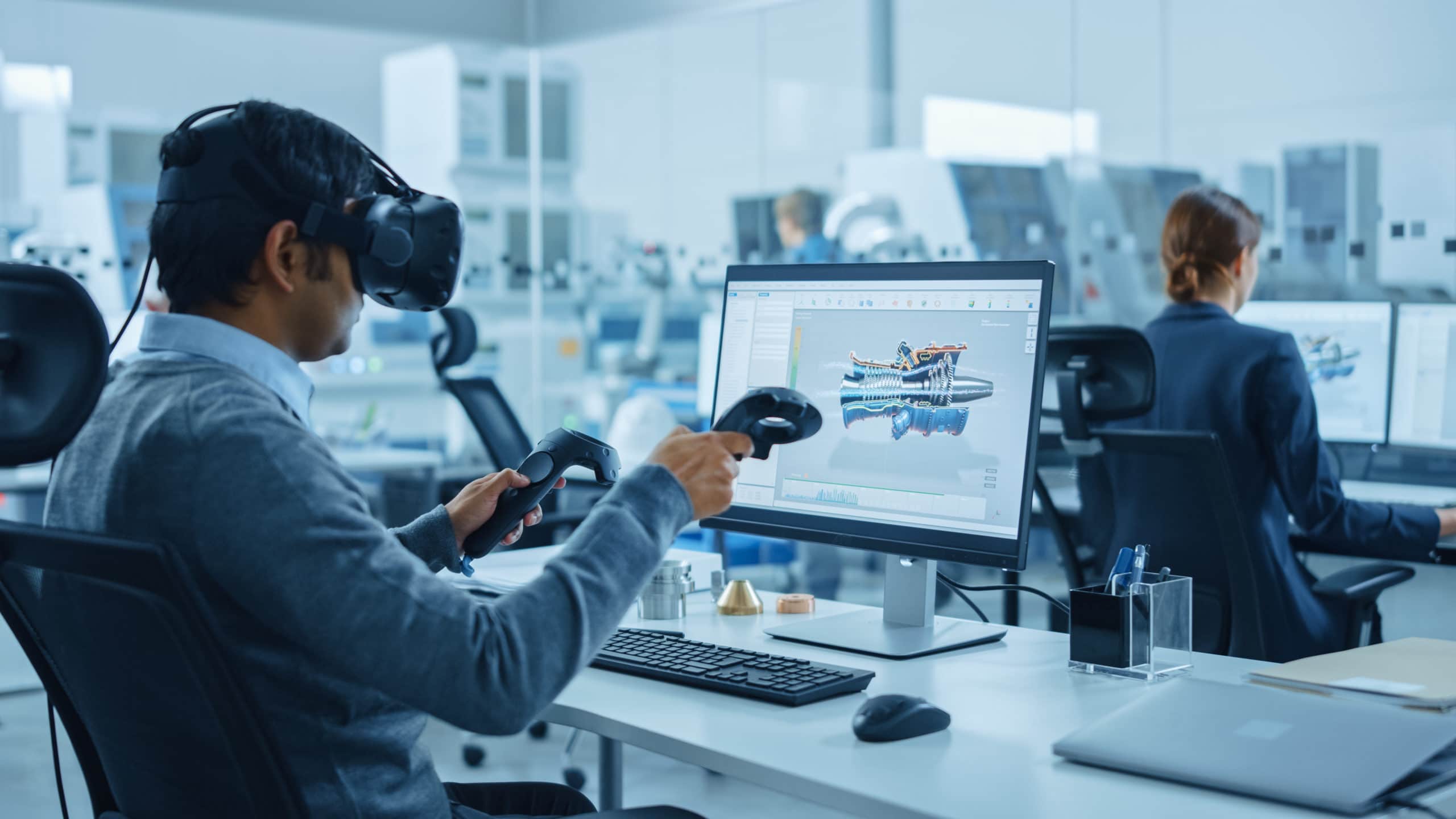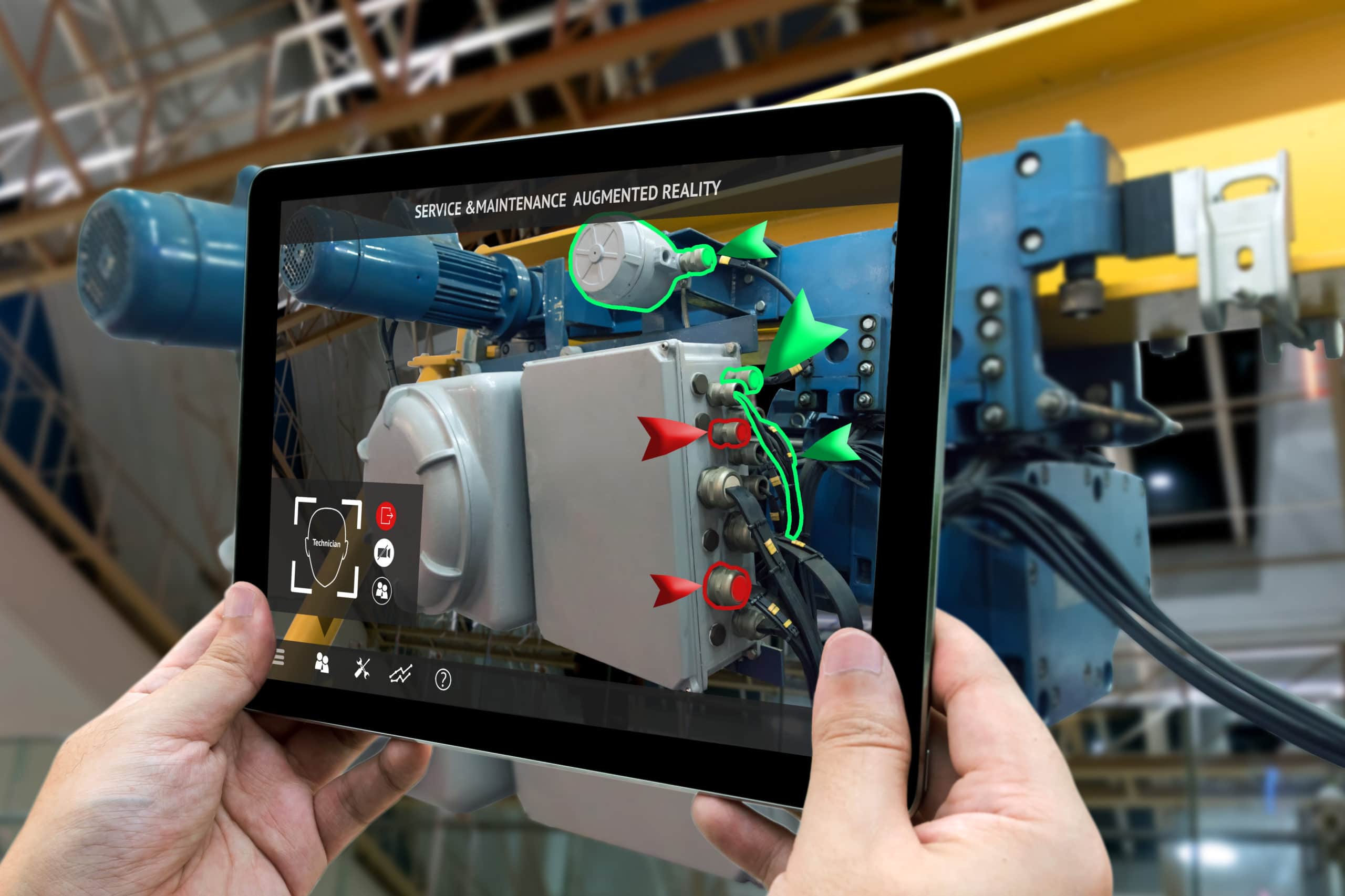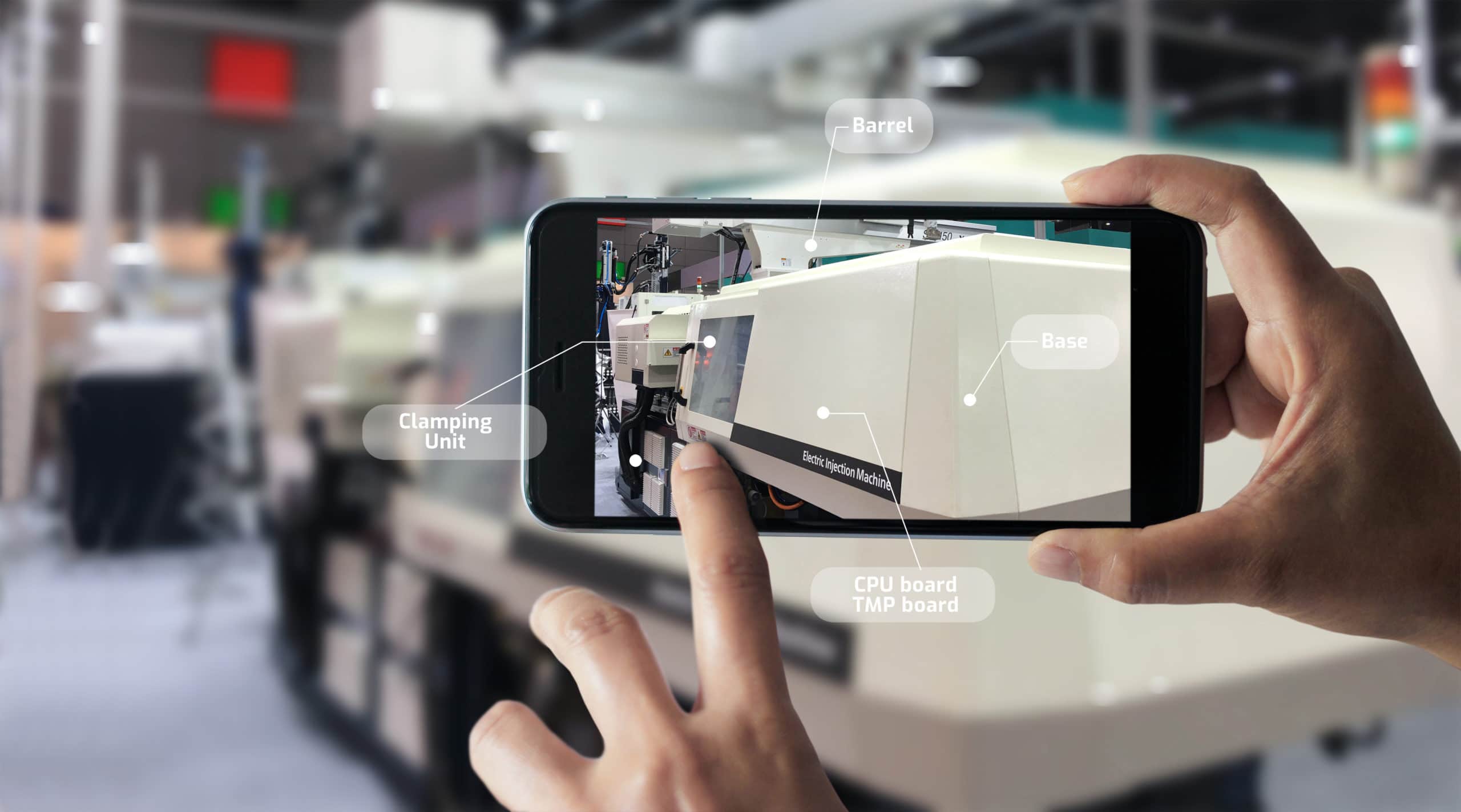The Future of Virtual & Augmented Reality in Manufacturing
| By Adam Sgammotta | 0 Comments

The use of virtual and augmented reality in manufacturing isn’t just the future—it’s the present too. Any manufacturer who is looking to improve their production processes needs to look toward Industry 4.0 technologies. But…what exactly is virtual and augmented reality…and how are manufacturers using these technologies?
In this article, we’ll cover everything you need to know about augmented and virtual reality in manufacturing. We’ll start first by defining what these technologies are.
Defining Augmented Reality & Virtual Reality
What Is Virtual Reality?

Virtual reality is a computer-generated reality. Any person in a virtual reality landscape will interact with their environment in lifelike ways, but the environment itself is not real.
The best example of virtual reality is a video game in which the player navigates through a realistic-appearing world that is wholly generated by code. Immersion of video game players in virtual reality is accomplished by wearing headsets or goggles that block outside sensory input.
Virtual reality (VR) headsets are also used to train pilots, help children correct eye conditions, and treat people with PTSD.
What Is Augmented Reality?

Augmented reality (AR) does not provide total immersion in a computer-generated world. Instead, AR combines the physical world with the digital world to “augment” reality. AR technology incorporates the intersection of virtual and real worlds using 3D depictions of real and virtual objects.
An example of augmented reality is the use of AR glasses by medical students who perform practice surgery on mannequins. AR glasses allow students to view bones and organs digitally on mannequins as a visual overlay.
Differences Between Augmented Reality & Virtual Reality
The primary difference between the two realities is that virtual reality completely immerses the user in a computer-generated world, while augmented reality complements the real world with computer-generated components.
You can define virtual reality by the following elements:
- Visual, auditory, and, in some cases, tactile sensations, which are controlled by VR headsets.
- VR users are entirely removed from reality through immersion in a fictional world.
Alternately, you can define augmented reality by the following elements:
- AR users remain wholly aware of their presence in actual reality.
- AR users do not need to wear headsets
Examples of Virtual & Augmented Reality in Manufacturing

Although the manufacturing sector was already using augmented and virtual reality, the emergence of the COVID-19 pandemic significantly accelerated its implementation in nearly all industries.
AR and VR provide no-contact methods for training employees, as well as developing and testing products. This is why many manufacturing plants rapidly incorporated AR and VR technology into their general processes.
Let’s take a look at some of the real-life examples of virtual and augmented reality in manufacturing.
Automobile
BMW is now using augmented and virtual reality in plants worldwide to improve employee training, revamp production protocols, and plan for the development of future BMW plants. By digitally capturing images of their factories using high-resolution cameras and 3D scanners, BMW promotes the ability of engineers and architects to create precise blueprints depicting ergonomic incorporation of logistics, production areas, assembly lines, and workstations.
Additionally, auto manufacturers like Hyundai are now offering customers the ability to test drive a vehicle from their homes. Using an augmented reality app, customers can discover how comfortable they feel behind the wheel before actually buying the car.
Aerospace
Lockheed Martin uses AR technology to enable accuracy and speed when building laser weapons systems, integrated air and laser defense systems, and many other products essential for U.S. security. Implementation of AR at Lockheed facilities has significantly reduced the number of shifts and technicians it takes to complete a manufacturing project. In addition, Boeing applies AR technology when engineers need to view wire renderings inside aircraft for the purpose of enhancing or evaluating aircraft components.
Robotics
A leading provider of machine automation and robotics technology, ABB Robotics uses augmented reality to test robotics systems and how employees interact with industrial robots. By analyzing these interactions, ABB Robotics is reducing the risk of errors, injuries, and downtime during production.
The Future of Augmented & Virtual Reality in Manufacturing

The father of virtual reality, Morton Heilig, got his idea for developing a VR device by watching people in movie theaters react to horror and action films. Calling it “Experience Theater,”Heilig constructed the Sensorama device in 1962. Components of the device included fans, stereo-sound speakers, odor emitters, stereoscopic color displays, and a chair capable of moving to simulate what was happening on screen.
Today, interest in AR/VR technology is skyrocketing among manufacturing plant owners and their stockholders. Although VR used to be solely associated with video games, it’s now a hot topic among manufacturers. This is because VR/AR allows manufacturers to affordably streamline production processes, optimize product designs, and create safer training experiences for employees.
Manufacturing & the Metaverse
The metaverse is the realm of cyberspace featuring virtual worlds that continue existing even after a computer device is turned off. Essentially, the metaverse is just a new term (popularized by Mark Zuckerberg) that refers to a virtual world.
Many manufacturers, like BMW and Hyundai, are already evaluating the benefits of the metaverse for their companies. Businesses can work with AR/VR developers to devise realistic simulations of their plants. These virtual plants help streamline collaboration among employees regardless of their physical location.
In the near future, we predict that more global manufacturers will create simulated factories/virtual plants in the metaverse.
Have Questions About VR/AR? Contact DSI Today!
From better efficiency and innovation to employee safety, there are many reasons why virtual and augmented reality in manufacturing is here to stay. DSI proudly offers consulting and engineering services for manufacturers around the United States.
If you have questions about AR/VR or other Industry 4.0 technologies, please schedule a consultation with one of our experts!